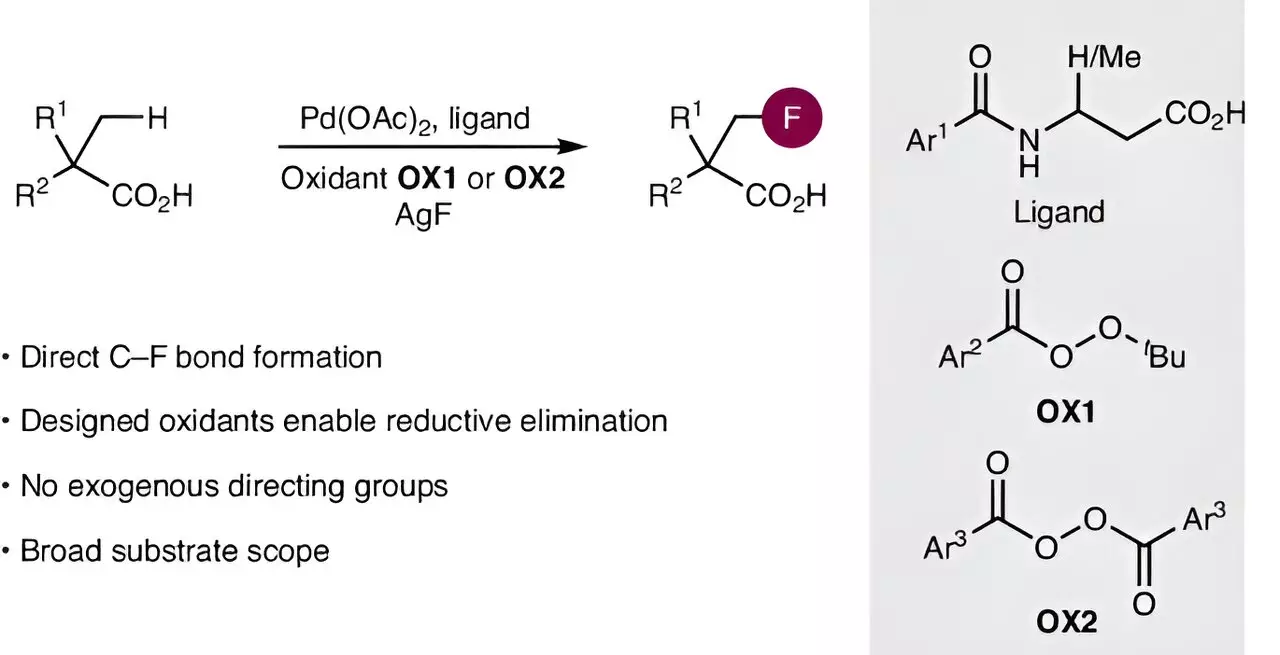Carboxylic acids are essential building blocks in the pharmaceutical landscape, playing pivotal roles in the development of numerous drugs, including well-known pain relievers like aspirin and ibuprofen. Their ability to form various derivatives makes them versatile in medicinal chemistry. However, researchers constantly seek ways to enhance their properties to improve efficacy and reduce side effects. One promising strategy involves the introduction of fluorine atoms, which can modify both the chemical behavior and bioactivity of these compounds.
The Challenge of Fluorination: Complexity in Synthesis
Despite the potential benefits of adding fluorine, the traditional methods for introducing these atoms into carboxylic acids have been hindered by complexity. The fluorination process typically demands intricate multi-step synthesis that can be both laborious and inefficient. This has limited the practical application of fluorinated carboxylic acids in drug design, prompting a need for a more streamlined approach. It is within this context that a group of researchers has embarked on an innovative pathway to simplify fluorination, potentially altering the synthesis landscape.
Groundbreaking Synthetic Methodology
A recent publication in *Nature Synthesis* presented a groundbreaking method for directly incorporating fluorine into aliphatic carboxylic acids. Spearheaded by researchers from the Otto Diels Institute of Organic Chemistry at Kiel University, this new approach significantly reduces the number of steps involved in the synthesis. The team, led by Professor Manuel van Gemmeren, focused on two challenging prerequisites: activating resilient carbon-hydrogen (C-H) bonds and successfully forming carbon-fluorine (C-F) bonds. The process of C-H activation, traditionally deemed arduous, has been overcome using innovative palladium catalysts. The team’s research has built on foundational work that ultimately contributes to this streamlined methodology.
Innovative Catalysis and Reaction Pathways
At the heart of this advancement lies the development of new, highly efficient catalysts that facilitate critical reactions in real-time. Additionally, the researchers created a novel oxidizing agent that plays an instrumental role in the crucial step of C-F bond formation. Unlike conventional approaches that often fall short when applied to aliphatic carboxylic acids, this tailored method revealed a unique reaction pathway. The synergistic design of the catalyst and oxidant allows for a robustness that promises broader applicability across similar synthetic challenges.
The Implications for Future Pharmaceutical Research
The ramifications of this innovative method extend beyond mere theoretical constructs; they can significantly influence the pharmaceutical sector. By minimizing synthesis time and complexity, the introduction of fluorine into carboxylic acids becomes a more attainable goal, unlocking new avenues for drug development. As Professor van Gemmeren notes, the potential applications are vast, highlighting a future where researchers can easily create fluorinated compounds that may enhance drug performance. This cutting-edge research not only reflects the dawning of a more efficient synthesis era but also underscores the indispensable relationship between chemistry and medical innovation.

